Retrieval of Snow Depth and Snow Water Equivalent Using Dual Polarization SAR Data
Abstract
1. Introduction
2. Methodology
2.1. Study Area and Data
2.2. Pre-Processing of SAR Data
2.3. Particle Anisotropy and Snow Depth
3. Results
4. Summary and Discussion
Author Contributions
Funding
Acknowledgments
Conflicts of Interest
References
- Tsai, Y.L.S.; Dietz, A.; Oppelt, N.; Kuenzer, C. Remote Sensing of Snow Cover Using Spaceborne SAR: A Review. Remote Sens. 2019, 11, 1456. [Google Scholar] [CrossRef]
- Bolch, T.; Shea, J.M.; Liu, S.; Azam, F.M.; Gao, Y.; Gruber, S.; Immerzeel, W.W.; Kulkarni, A.; Li, H.; Tahir, A.A.; et al. Status and Change of the Cryosphere in the Extended Hindu Kush Himalaya Region. In The Hindu Kush Himalaya Assessment; Wester, P., Mishra, A., Mukherji, A., Shrestha, A.B., Eds.; Springer International Publishing: Cham, Switzerland, 2019; pp. 209–255. [Google Scholar] [CrossRef]
- Mityók, Z.K.; Bolton, D.K.; Coops, N.C.; Berman, E.E.; Senger, S. Snow cover mapped daily at 30 meters resolution using a fusion of multi-temporal MODIS NDSI data and Landsat surface reflectance. Can. J. Remote Sens. 2018, 44, 413–434. [Google Scholar] [CrossRef]
- Saberi, N.; Kelly, R.; Flemming, M.; Li, Q. Review of snow water equivalent retrieval methods using spaceborne passive microwave radiometry. Int. J. Remote Sens. 2020, 41, 996–1018. [Google Scholar] [CrossRef]
- Deems, J.S.; Painter, T.H.; Finnegan, D.C. Lidar measurement of snow depth: A review. J. Glaciol. 2013, 59, 467–479. [Google Scholar] [CrossRef]
- Rott, H.; Yueh, S.H.; Cline, D.W.; Duguay, C.; Essery, R.; Haas, C.; Hélière, F.; Kern, M.; Macelloni, G.; Malnes, E.; et al. Cold Regions Hydrology High-Resolution Observatory for Snow and Cold Land Processes. Proc. IEEE 2010, 98, 752–765. [Google Scholar] [CrossRef]
- Kurtz, N.T.; Farrell, S.L.; Studinger, M.; Galin, N.; Harbeck, J.P.; Lindsay, R.; Onana, V.D.; Panzer, B.; Sonntag, J.G. Sea ice thickness, freeboard, and snow depth products from Operation IceBridge airborne data. Cryosphere 2013, 7, 1035–1056. [Google Scholar] [CrossRef]
- Leinss, S.; Parrella, G.; Hajnsek, I. Snow Height Determination by Polarimetric Phase Differences in X-Band SAR Data. IEEE J. Sel. Top. Appl. Earth Obs. Remote. Sens. 2014, 7, 3794–3810. [Google Scholar] [CrossRef]
- Leinss, S.; Löwe, H.; Proksch, M.; Lemmetyinen, J.; Wiesmann, A.; Hajnsek, I. Anisotropy of seasonal snow measured by polarimetric phase differences in radar time series. Cryosphere 2016, 10, 1771–1797. [Google Scholar] [CrossRef]
- Majumdar, S.; Thakur, P.; Chang, L.; Kumar, S. X-band polarimetric sar copolar phase difference for fresh snow depth estimation in the Northwestern Himalayan watershed. In Proceedings of the 2019 IEEE International Geoscience and Remote Sensing Symposium, IGARSS 2019, Yokohama, Japan, 28 July–2 August 2019; pp. 4102–4105. [Google Scholar] [CrossRef]
- Singh, G.; Venkataraman, G. Snow density estimation using Polarimitric ASAR data. In Proceedings of the 2009 IEEE International Geoscience and Remote Sensing Symposium, Cape Town, South Africa, 12–17 July 2009. [Google Scholar]
- Cuerda Munoz, J.M.; Rodriguez, M.G.; Gonzalez Bonilla, M.J.; Vazquez, N.C.; Revenga, P.C.; Martinez, N.G.; Pescador, A.L. INTA Commissioning Phase Plan for PAZ Mission. In Proceedings of the 12th European Conference on Synthetic Aperture Radar, Aachen, Germany, 4–7 June 2018; pp. 1–4. [Google Scholar]
- Snow Fork. Available online: https://toikkaoy.com/Snowfork.htm (accessed on 21 November 2019).
- Lee, J.S.; Pottier, E. Polarimetric Radar Imaging: From Basics to Applications; Number 142 in Optical Science and Engineering; CRC Press/Taylor & Francis: Boca Raton, FL, USA, 2009. [Google Scholar]
- Löwe, H.; Riche, F.; Schneebeli, M. A general treatment of snow microstructure exemplified by an improved relation for thermal conductivity. Cryosphere 2013, 7, 1473–1480. [Google Scholar] [CrossRef]
- Sihvola, A. Mixing Rules with Complex Dielectric Coefficients. Subsurf. Sens. Technol. Appl. 2000, 1, 393–415. [Google Scholar] [CrossRef]
- Climate Engine. Available online: https://climateengine.org/ (accessed on 22 November 2019).
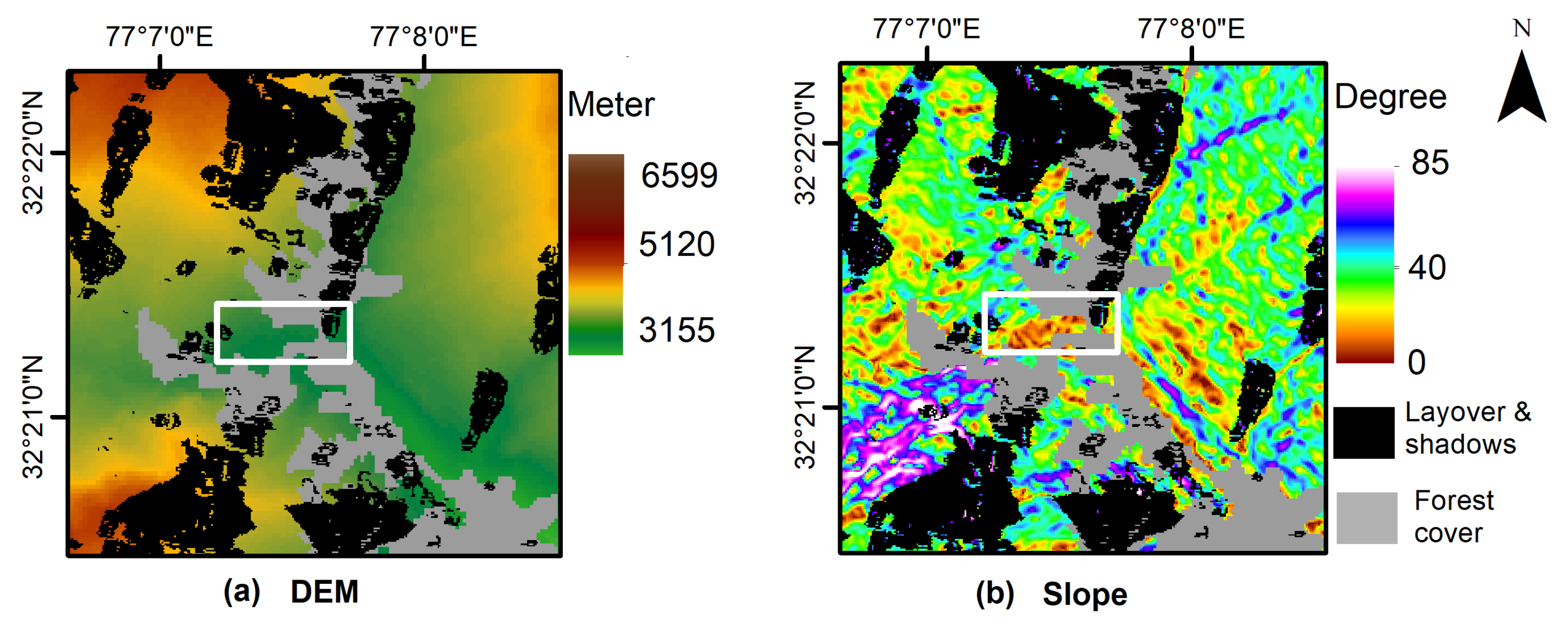
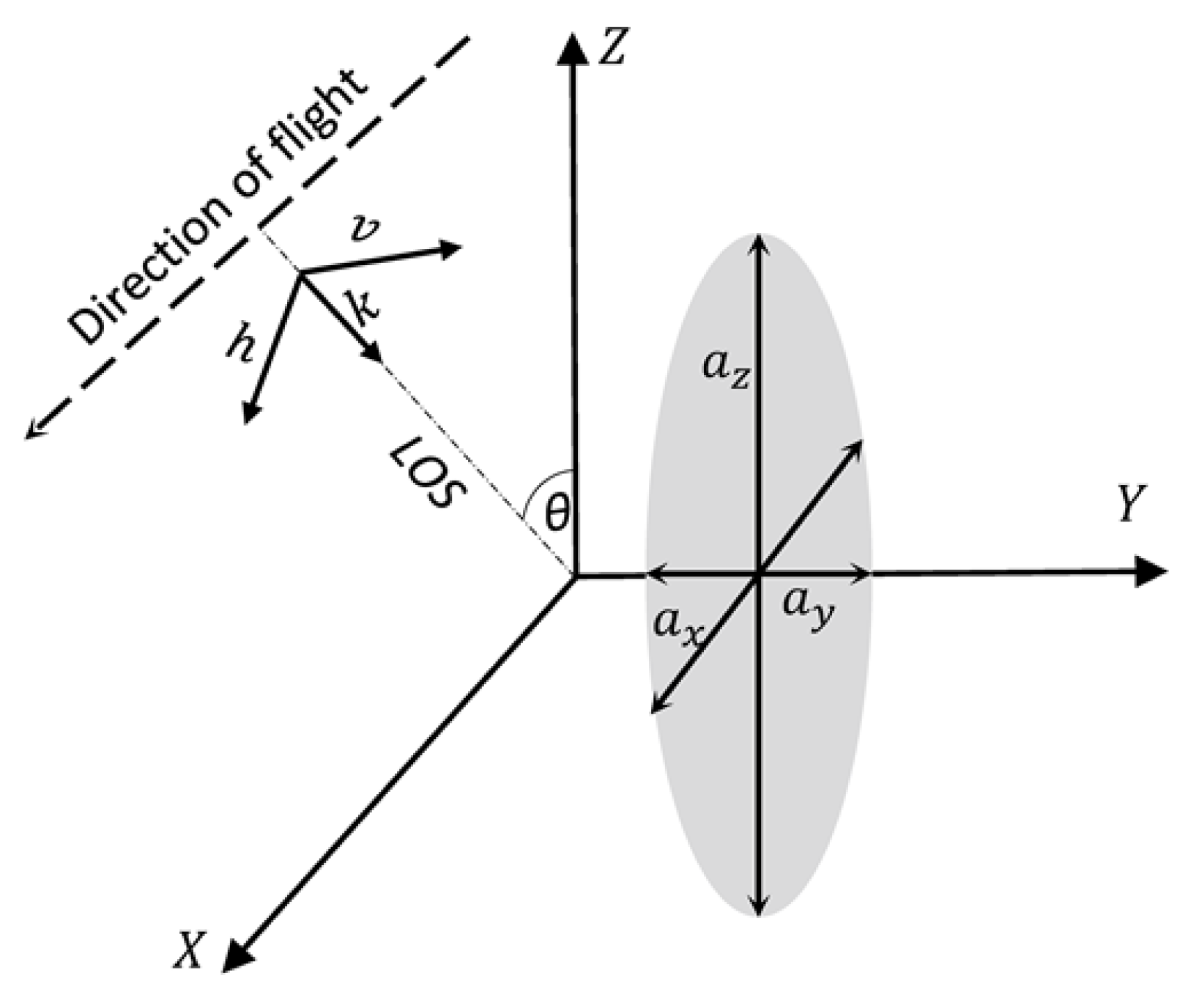
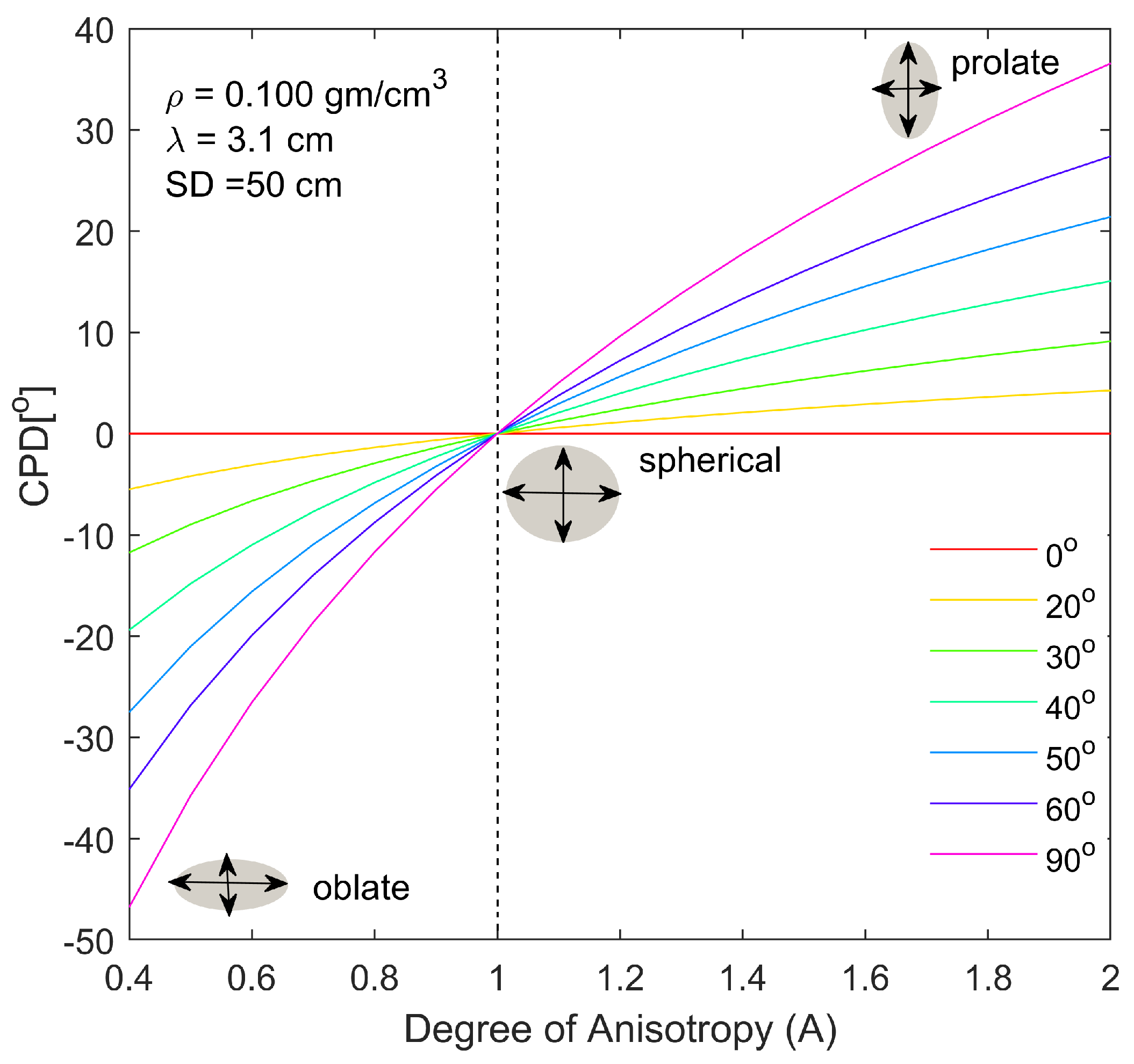
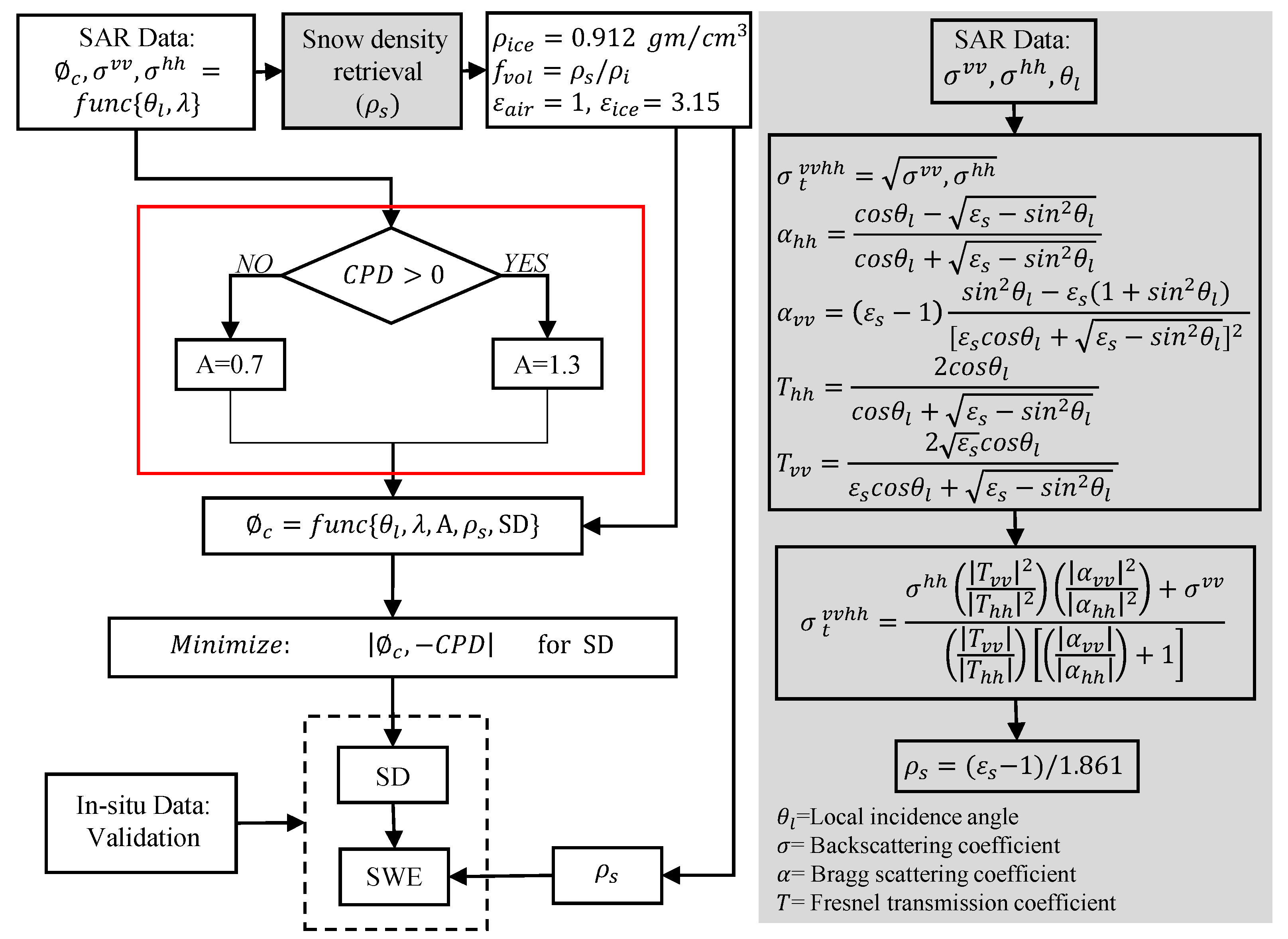
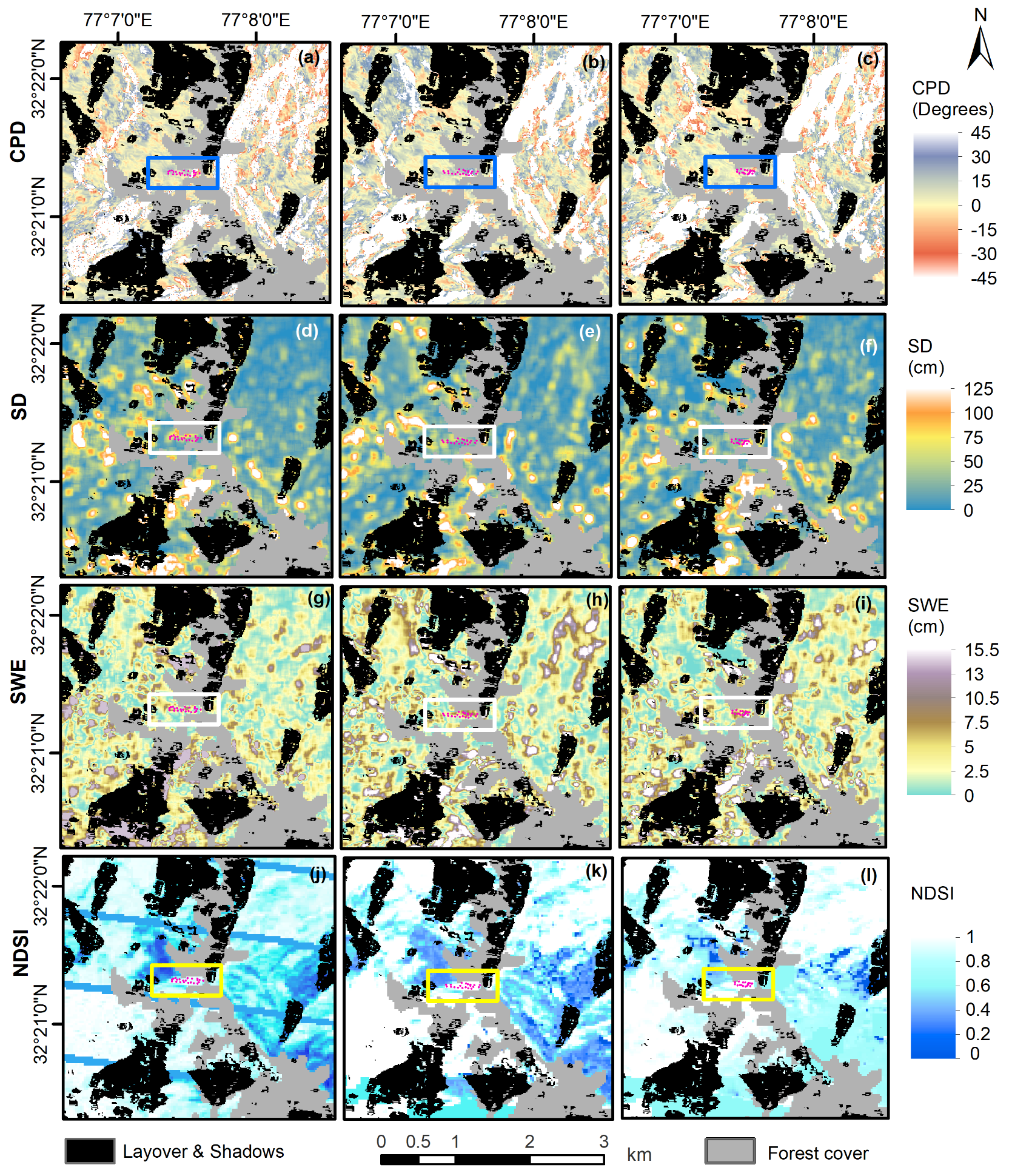
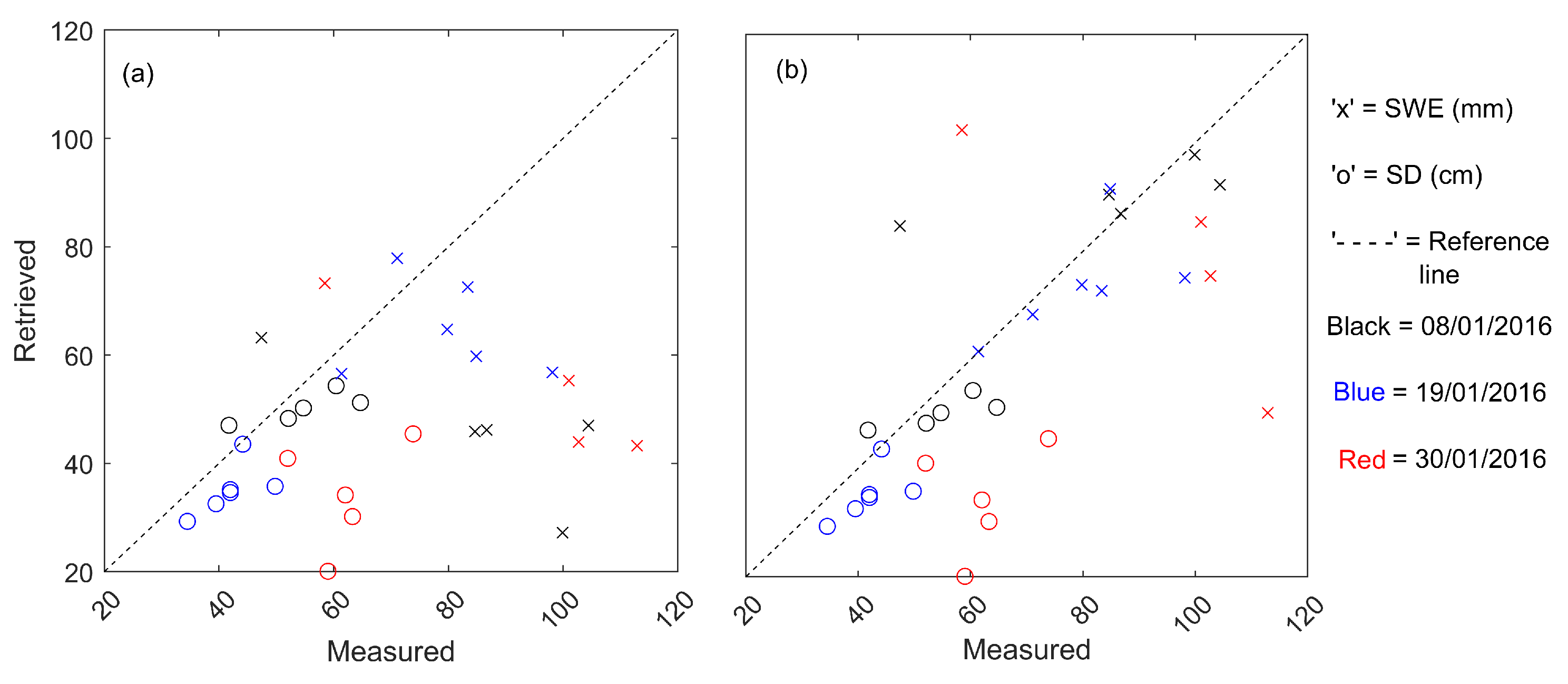
| Parameter | Range of the Measurement |
|---|---|
| 1 to 2.9, accuracy (0.02) | |
| 1 to 0.15, accuracy (0.002) | |
| 0 to 10% | |
| 0 to 0.6 gm/cm3 | |
| −40 to +55° |
| Prolate | Oblate |
|---|---|
| Acquisition Date | Measured | Retrieved | ||
|---|---|---|---|---|
| SD (cm) | SWE (mm) | SD (cm) | SWE (mm) | |
| 2016/01/08 | 41.75 | 47.42 | 47.04 | 63.20 |
| 52.11 | 86.69 | 48.31 | 46.21 | |
| 60.42 | 99.89 | 54.33 | 27.19 | |
| 64.66 | 104.4 | 51.23 | 46.98 | |
| Average | 54.73 | 84.61 | 50.23 | 45.89 |
| 2016/01/19 | 34.50 | 61.39 | 29.30 | 56.58 |
| 39.50 | 71.05 | 32.55 | 77.91 | |
| 42.00 | 83.36 | 34.62 | 72.58 | |
| 44.16 | 84.88 | 43.55 | 59.79 | |
| 49.80 | 98.16 | 35.77 | 56.80 | |
| Average | 41.99 | 79.77 | 35.16 | 64.73 |
| 2016/01/30 | 52.00 | 58.46 | 40.93 | 73.29 |
| 59.00 | 112.9 | 20.09 | 43.27 | |
| 63.28 | 102.7 | 30.19 | 43.96 | |
| 73.85 | 130.1 | 45.46 | 60.62 | |
| Average | 62.03 | 101.0 | 34.17 | 55.29 |
| Data Sets | MAE | RMSE | Percentage Error (PE) | |||
|---|---|---|---|---|---|---|
| SD (cm) | SWE (mm) | SD (cm) | SWE (mm) | SD (%) | SWE(%) | |
| 2016/01/08 | 6.62 | 46.38 | 7.48 | 49.65 | 8.22 | 45.76 |
| 2016/01/19 | 6.83 | 17.32 | 7.88 | 21.41 | 16.26 | 18.85 |
| 2016/01/30 | 27.86 | 51.70 | 29.73 | 57.78 | 44.19 | 45.25 |
© 2020 by the authors. Licensee MDPI, Basel, Switzerland. This article is an open access article distributed under the terms and conditions of the Creative Commons Attribution (CC BY) license (http://creativecommons.org/licenses/by/4.0/).
Share and Cite
Patil, A.; Singh, G.; Rüdiger, C. Retrieval of Snow Depth and Snow Water Equivalent Using Dual Polarization SAR Data. Remote Sens. 2020, 12, 1183. https://doi.org/10.3390/rs12071183
Patil A, Singh G, Rüdiger C. Retrieval of Snow Depth and Snow Water Equivalent Using Dual Polarization SAR Data. Remote Sensing. 2020; 12(7):1183. https://doi.org/10.3390/rs12071183
Chicago/Turabian StylePatil, Akshay, Gulab Singh, and Christoph Rüdiger. 2020. "Retrieval of Snow Depth and Snow Water Equivalent Using Dual Polarization SAR Data" Remote Sensing 12, no. 7: 1183. https://doi.org/10.3390/rs12071183
APA StylePatil, A., Singh, G., & Rüdiger, C. (2020). Retrieval of Snow Depth and Snow Water Equivalent Using Dual Polarization SAR Data. Remote Sensing, 12(7), 1183. https://doi.org/10.3390/rs12071183








